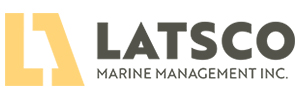A new report from the International Labour Organization (ILO) explores how artificial intelligence (AI), digitalization, robotics and automation are reshaping occupational safety and health (OSH) in workplaces worldwide.
How is digitalization transforming safety and health at work?
According to the report, digitalization and automation are impacting millions of jobs worldwide, presenting unprecedented opportunities to enhance occupational safety and health. Automation and smart monitoring systems can reduce hazardous exposures, prevent workplace injuries, and improve overall working conditions. Nevertheless, proactive policies are needed to address the potential risks.
-
Automation and advanced robotics are streamlining physical and cognitive tasks, reducing exposure to hazardous environments and repetitive strain injuries. Potential associated concerns include mechanical failures, as well as ergonomic, physical (e.g., noise), and psychosocial risks.
-
Smart Occupational Safety and Health (OSH) tools and monitoring systems, including AI-powered sensors and wearable devices, enable real-time hazard detection, predictive risk assessments, and proactive OSH management. Ensuring usability, proper fit for diverse workers, privacy protection, and managing stress from continuous monitoring are key considerations.
-
Extended and virtual reality are transforming worker training through immersive simulations for hazard recognition and emergency response. However, risks such as blocked visibility, balance issues, visual strain, and cognitive overload must be managed.
-
Algorithmic management of work uses AI-driven or programmed systems to coordinate labour, optimize task allocation, improve engagement and work-life balance, and address skill gaps. However, potential risks such as excessive surveillance and work intensification must be controlled.
-
Changing work arrangements through digitalization, including telework and digital labour platforms, offer flexibility but may also pose physical and psychosocial OSH challenges.
How do we ensure OSH in the digital era?
Existing OSH frameworks, including ILO OSH standards, remain essential for safeguarding the right to a safe and healthy working environment in the digital era.
Recognizing the interdisciplinary nature of OSH and digitalization, some countries are mainstreaming OSH considerations into broader policies on AI and digital transition. On the other hand, some countries are integrating digitalization into OSH policy frameworks to enhance risk prevention, monitoring and worker protection.
Countries are also beginning to review and adapt their legal frameworks. Key areas of legal development include updating robotics safety regulations and human-robot interaction protocols to mitigate risks in collaborative work environments. They also entail establishing the right to disconnect to prevent digital burnout and overwork. Additionally, OSH protections are being expanded to cover remote and platform work, acknowledging the evolving nature of work.
Complementing these policy measures, voluntary standards and guidance, awareness campaigns, training initiatives and research programmes are playing a crucial role to guide businesses and equip workers with the necessary skills to use new technologies safely. However, further research is needed to better understand the long-term OSH impacts of digital technologies and ensure informed implementation.
At the workplace level, regular risk assessment and management remain essential to proactively addressing emerging digital risks. This involves regularly evaluating risks associated with new technologies, implementing preventive measures aligned with the OSH hierarchy of controls, and continuously adapting OSH policies to remain effective as technologies evolve, incorporating worker feedback and the latest OSH advancements.
Digital tools like AI-driven analytics, real-time monitoring, and predictive modelling can enhance risk assessments and OSH strategies but must complement – not replace – human judgement in OSH practices.
Workers and their representatives should be actively involved at all stages of digital technology implementation, including design, operation, and monitoring, ensuring technologies enhance rather than undermine safety and health at work.
According to ILO, by adopting a collaborative, forward-looking, and worker-centred approach, stakeholders can ensure digital innovation leads to safer, healthier, and more sustainable workplaces, benefiting everyone involved.
Digitalization offers immense opportunities to enhance workplace safety. Robots can replace workers in hazardous ‘3D jobs’, which can be dirty, dangerous, and demeaning. Automation can reduce repetitive tasks, such as in factory production lines or in administrative work, allowing workers to take on more challenging tasks,
… said Manal Azzi, Team Lead on OSH Policy at the ILO.
Artificial intelligence and automation in maritime
The 2024 CAREER4SEA Forum featured a panel discussion where industry experts shared insights into these challenges and opportunities, as well as strategies for cultivating a future-ready maritime workforce that can keep up with the emerging automation and digitalization. The panelists agreed on the following key strategies:
- Investing in training and education – Continuous professional development is necessary to bridge the gap between traditional maritime knowledge and emerging technological expertise.
- Promoting cross-industry collaboration – Learning from other transportation sectors, such as aviation and rail, can accelerate the adoption of best practices in digitalization and sustainability.
- Emphasizing human-AI collaboration – Rather than viewing AI as a threat, seafarers should be trained to leverage it as a tool to enhance efficiency and safety.
- Encouraging industry-wide standardization – Establishing common frameworks for training and regulatory compliance can streamline the transition to digitalized and decarbonized operations.






























































